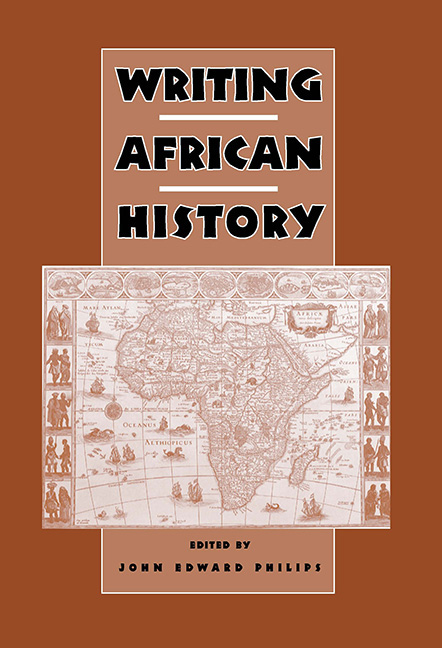Book contents
- Frontmatter
- Dedication
- Contents
- Acknowledgments
- Introduction
- Part I Background
- Part II Sources of Data
- 2 Archaeology and the Reconstruction of the African Past
- 3 Writing African History from Linguistic Evidence 86
- 4 Physical Anthropology and African History
- 5 The Importance of Botanical Data to Historical Research on Africa
- 6 Oral Tradition as a Means of Reconstructing the Past
- 7 Oral Sources and the Challenge of African History
- 8 Arabic Sources for African History
- 9 European Documents and African History
- 10 Mission and Colonial Documents
- Part III Perspectives on History
- Part IV Conclusion
- Contributors
- Index
- Miscellaneous Endmatter
9 - European Documents and African History
from Part II - Sources of Data
Published online by Cambridge University Press: 11 May 2017
- Frontmatter
- Dedication
- Contents
- Acknowledgments
- Introduction
- Part I Background
- Part II Sources of Data
- 2 Archaeology and the Reconstruction of the African Past
- 3 Writing African History from Linguistic Evidence 86
- 4 Physical Anthropology and African History
- 5 The Importance of Botanical Data to Historical Research on Africa
- 6 Oral Tradition as a Means of Reconstructing the Past
- 7 Oral Sources and the Challenge of African History
- 8 Arabic Sources for African History
- 9 European Documents and African History
- 10 Mission and Colonial Documents
- Part III Perspectives on History
- Part IV Conclusion
- Contributors
- Index
- Miscellaneous Endmatter
Summary
In the heady 1960s, oral tradition was billed as the means by which African history would be recovered. Scholars of those days believed that the fact many African societies did not keep any form of written records was not an insuperable problem. Historians would simply have to tap oral sources to find African history. The years since then have dimmed this vision. Oral tradition has not proven to be a substitute for the on-the-spot, eyewitness documentation that can come from written sources. Moreover, the study of oral tradition raises difficult problems of interpretation and ambiguity. Even in the 1960s, historians who wrote the histories of coastal African societies, such as Asante, Benin, Dahomey, the states of the Senegal valley, Angola, and Sierra Leone made extensive use of written documents of European origin. They made scant use of oral tradition although, like others, they championed its collection and use.
The value of written documents is revealed even more clearly when regions located far from the coast, and outside the range of European literate observers, are considered. Thus, for example, the states of the Benue valley, the Adamawa region, the Azande and Mangbetu region, the Luba, Lunda, Lozi, and other great interior central African states are poorly known, even in the early nineteenth century, despite their obvious sophistication and culture.
Thus, no historian can begin writing the history of most of coastal Africa south of the Sahara without recourse to these European sources. They do, of course, present some problems, most of which are well known. A major conference, held in Bad Homburg, West Germany, in 1986, examined and produced an overview of the critical problems of using such sources. First, they are the work of outsiders with often limited interest in the societies they describe. Many of the authors lived on the coast for only a few years, did not speak local languages, and were often interested only in commercial affairs. Many also had strong prejudices about Africans, which made them biased observers.
For example, Capuchin missionaries made numerous and sometimes detailed assessments of local religious life during their evangelical work in Kongo. Much of this work takes the form of denunciations of local customs, thus revealing a strong Christian bias. This bias is reflected, for example, in their tendency to identify all supernatural beings worshipped in Kongo as manifestations of the Devil.
- Type
- Chapter
- Information
- Writing African History , pp. 254 - 265Publisher: Boydell & BrewerPrint publication year: 2005

